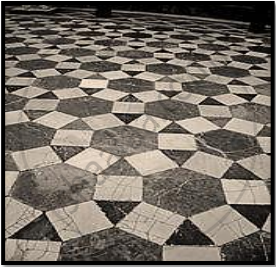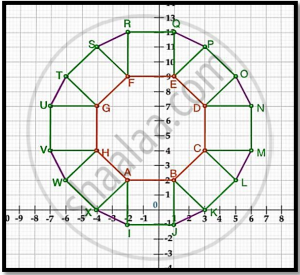Advertisements
Advertisements
प्रश्न
Find the coordinates of the point which divides the line segment joining (−1,3) and (4, −7) internally in the ratio 3 : 4
उत्तर
We have A (−1, 3) and B (4,−7) be two points. Let a point P(x, y) divide the line segment joining the points A and B in the ratio 3:4 internally.
Now according to the section formula if point a point P divides a line segment joining `A(x_1, y_1)` and B`(x_2, y_2)` in the ratio m: n internally than,
P(x,y) = ((nx_1 + mx_2)/(m+n), (ny_1 + my_2)/(m+n))
`= (8/7,-9/7)`
Therefore, co-ordinates of point P is `(8/7,-9/7)`
APPEARS IN
संबंधित प्रश्न
Prove that (4, 3), (6, 4) (5, 6) and (3, 5) are the angular points of a square.
Show hat A(1,2), B(4,3),C(6,6) and D(3,5) are the vertices of a parallelogram. Show that ABCD is not rectangle.
Show that the following points are the vertices of a rectangle.
A (2, -2), B(14,10), C(11,13) and D(-1,1)
If the point A(0,2) is equidistant from the points B(3,p) and C(p, 5), find p.
ΔXYZ ∼ ΔPYR; In ΔXYZ, ∠Y = 60o, XY = 4.5 cm, YZ = 5.1 cm and XYPY =` 4/7` Construct ΔXYZ and ΔPYR.
Find the area of a parallelogram ABCD if three of its vertices are A(2, 4), B(2 + \[\sqrt{3}\] , 5) and C(2, 6).
If the points A(1, –2), B(2, 3) C(a, 2) and D(– 4, –3) form a parallelogram, find the value of a and height of the parallelogram taking AB as base.
Write the ratio in which the line segment joining points (2, 3) and (3, −2) is divided by X axis.
Write the formula for the area of the triangle having its vertices at (x1, y1), (x2, y2) and (x3, y3).
Find the values of x for which the distance between the point P(2, −3), and Q (x, 5) is 10.
If (x , 2), (−3, −4) and (7, −5) are collinear, then x =
The line segment joining points (−3, −4), and (1, −2) is divided by y-axis in the ratio.
The coordinates of a point on x-axis which lies on the perpendicular bisector of the line segment joining the points (7, 6) and (−3, 4) are
Point P(– 4, 2) lies on the line segment joining the points A(– 4, 6) and B(– 4, – 6).
Point (–3, 5) lies in the ______.
Point (–10, 0) lies ______.
The point at which the two coordinate axes meet is called the ______.
Point (3, 0) lies in the first quadrant.
A tiling or tessellation of a flat surface is the covering of a plane using one or more geometric shapes, called tiles, with no overlaps and no gaps. Historically, tessellations were used in ancient Rome and in Islamic art. You may find tessellation patterns on floors, walls, paintings etc. Shown below is a tiled floor in the archaeological Museum of Seville, made using squares, triangles and hexagons.

A craftsman thought of making a floor pattern after being inspired by the above design. To ensure accuracy in his work, he made the pattern on the Cartesian plane. He used regular octagons, squares and triangles for his floor tessellation pattern

Use the above figure to answer the questions that follow:
- What is the length of the line segment joining points B and F?
- The centre ‘Z’ of the figure will be the point of intersection of the diagonals of quadrilateral WXOP. Then what are the coordinates of Z?
- What are the coordinates of the point on y-axis equidistant from A and G?
OR
What is the area of Trapezium AFGH?
Assertion (A): The point (0, 4) lies on y-axis.
Reason (R): The x-coordinate of a point on y-axis is zero.
